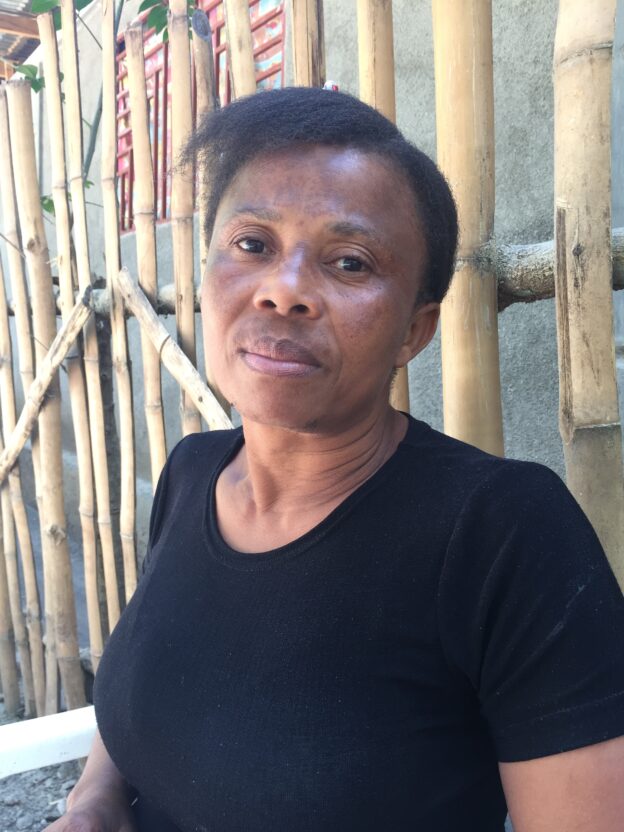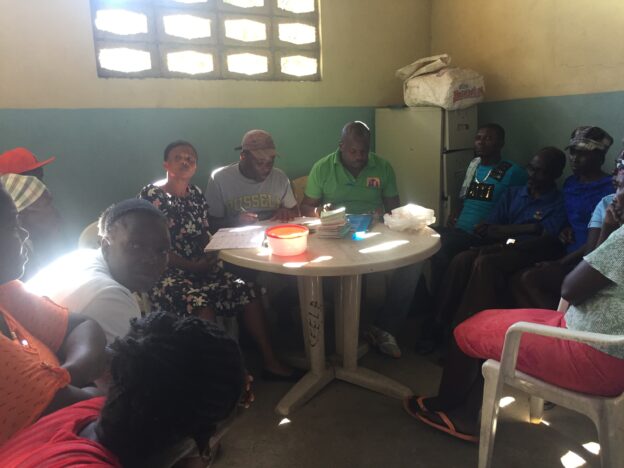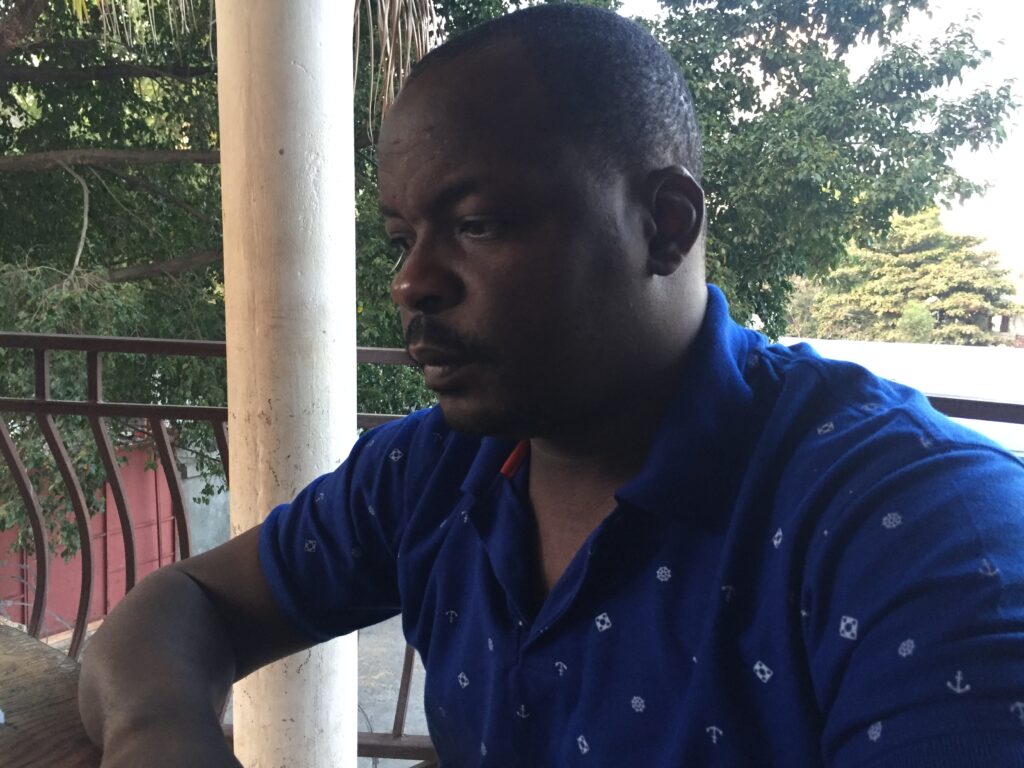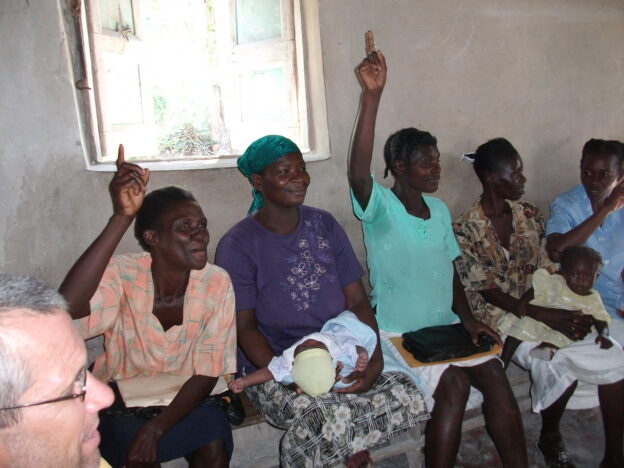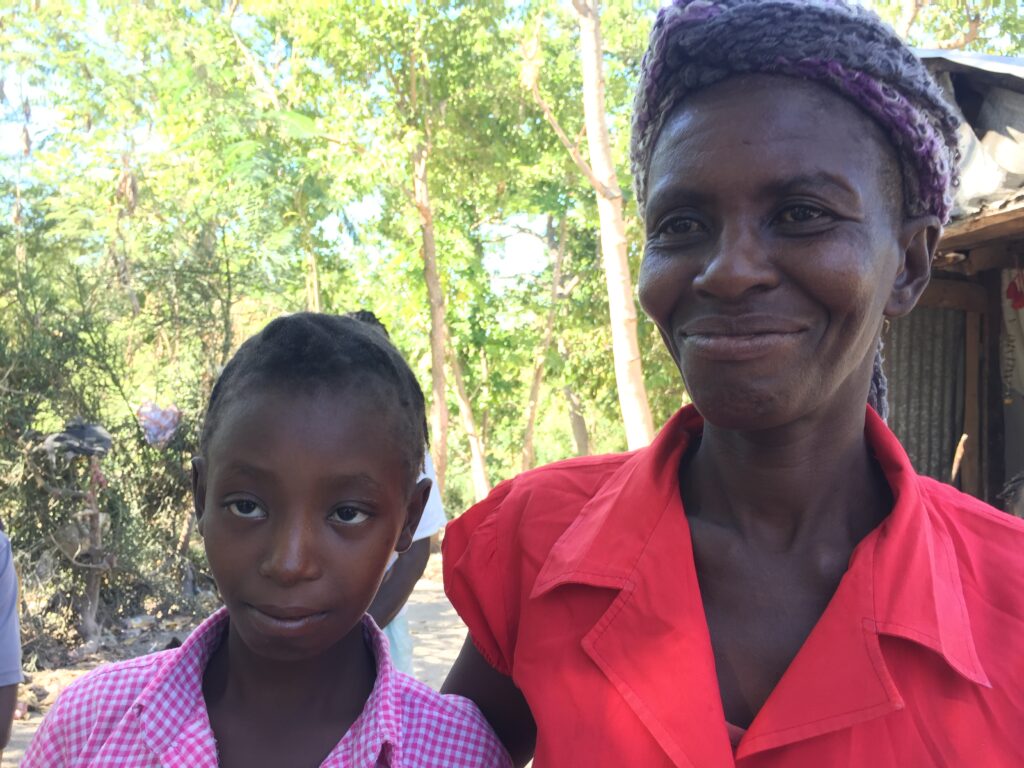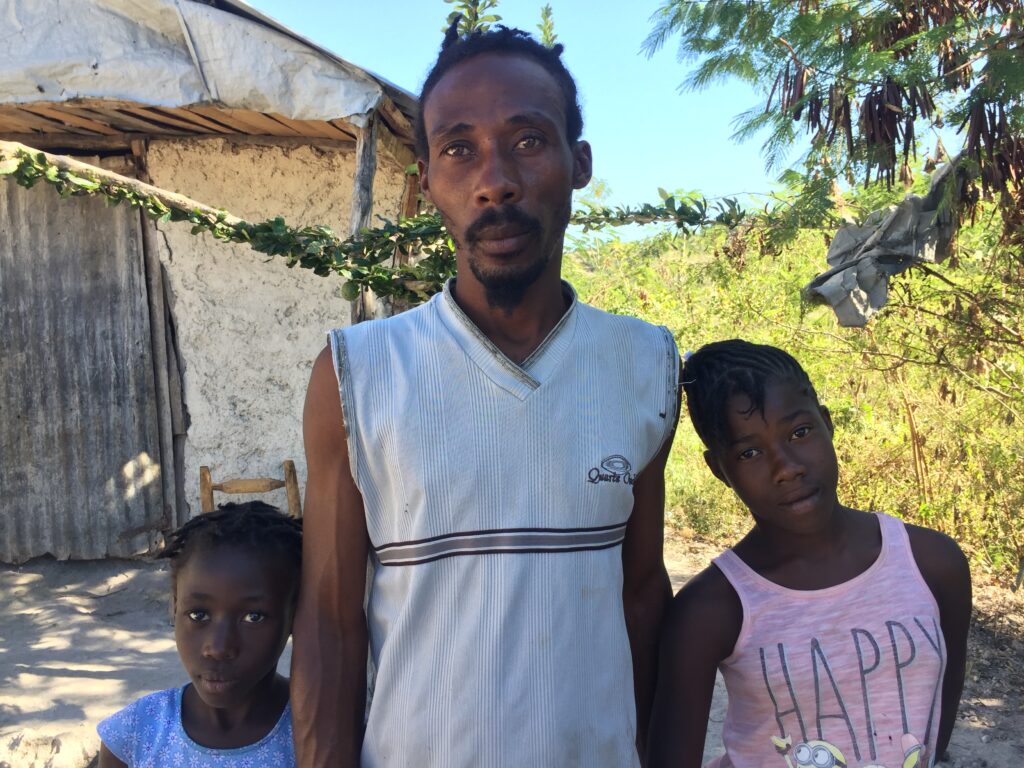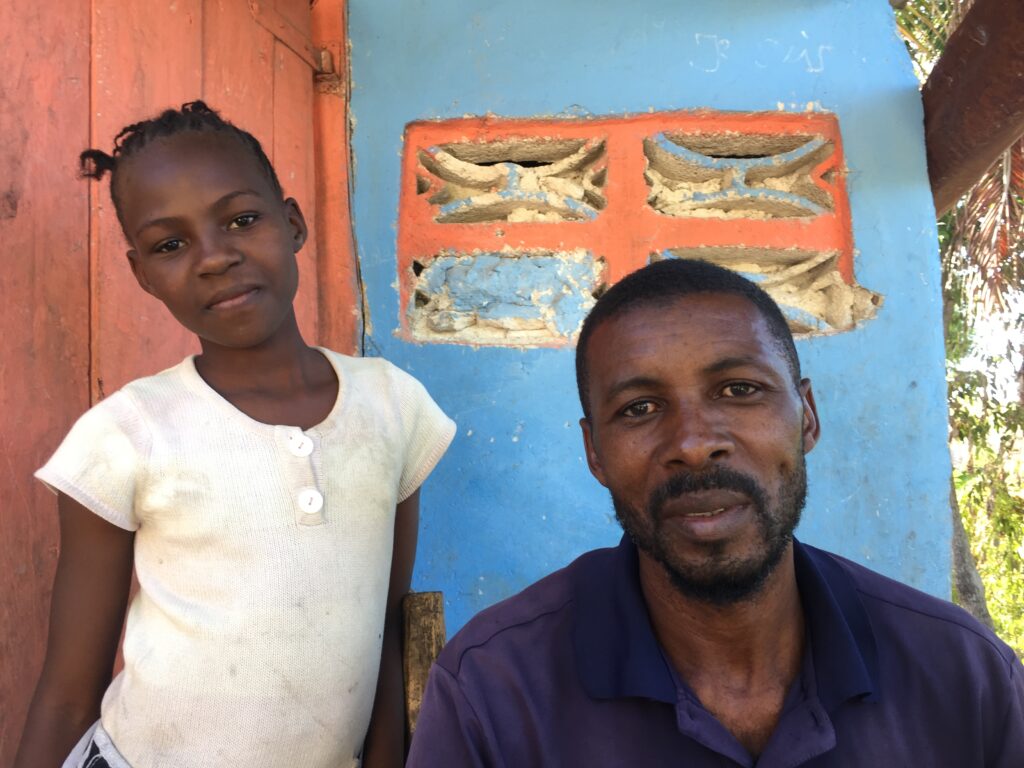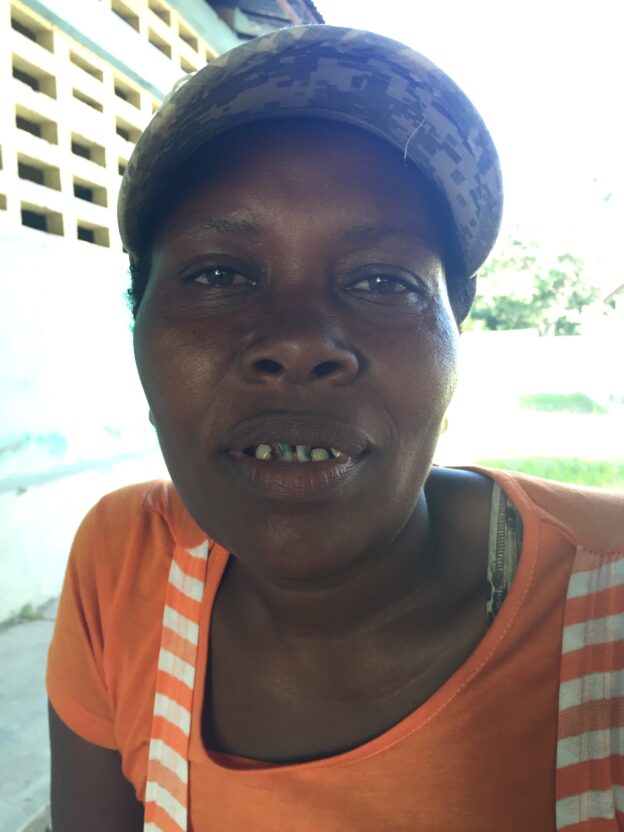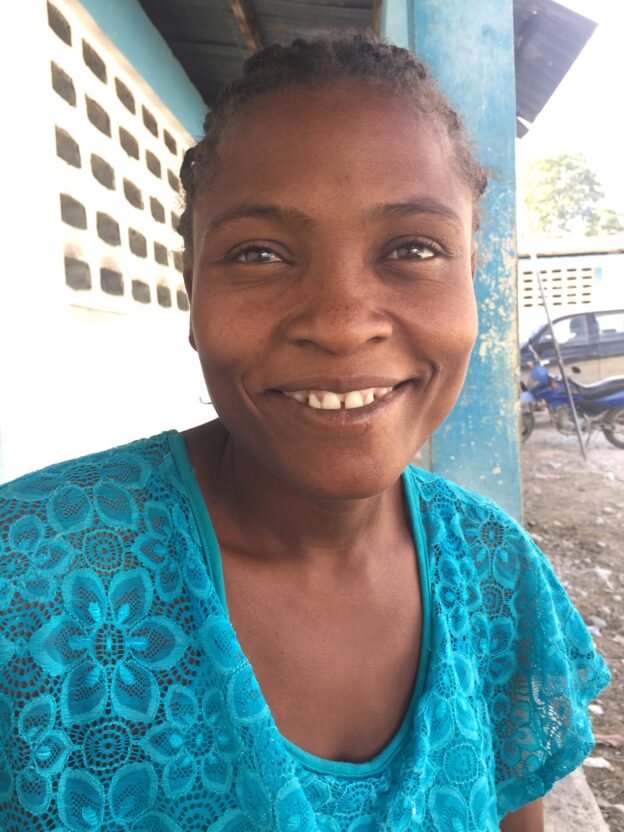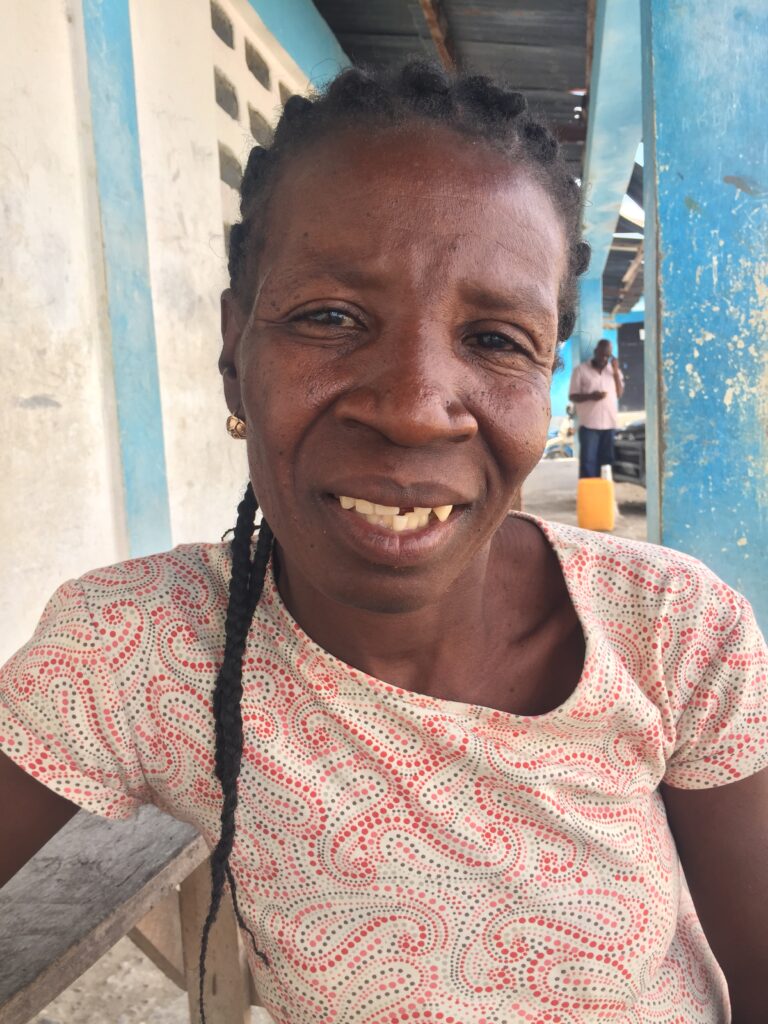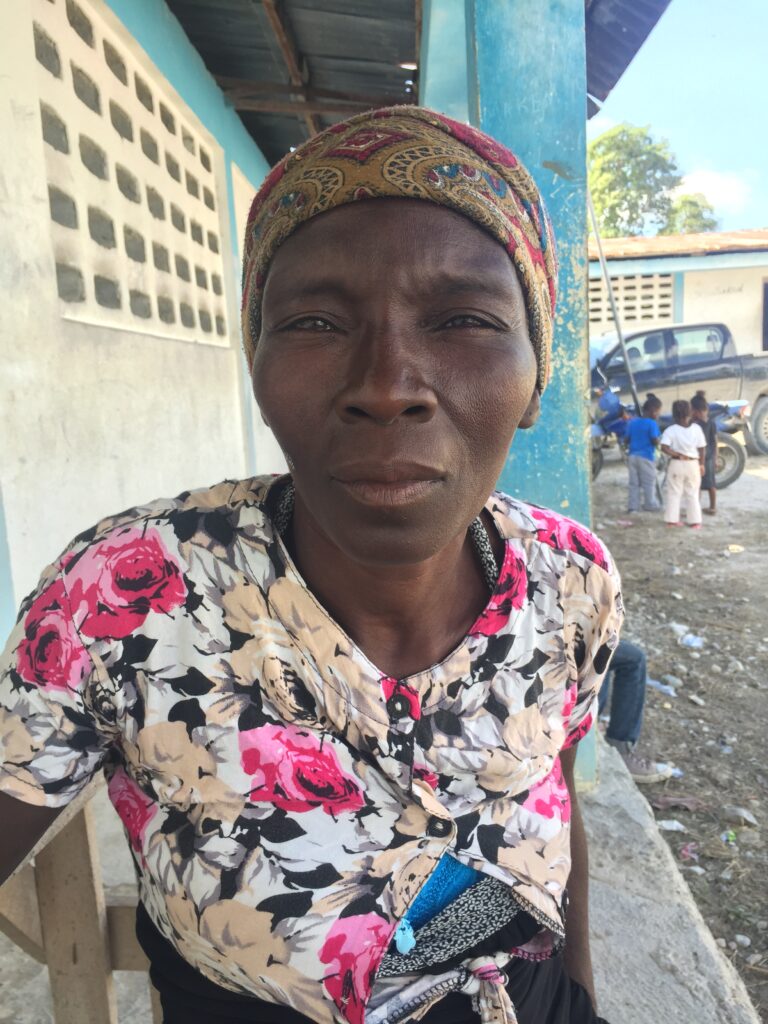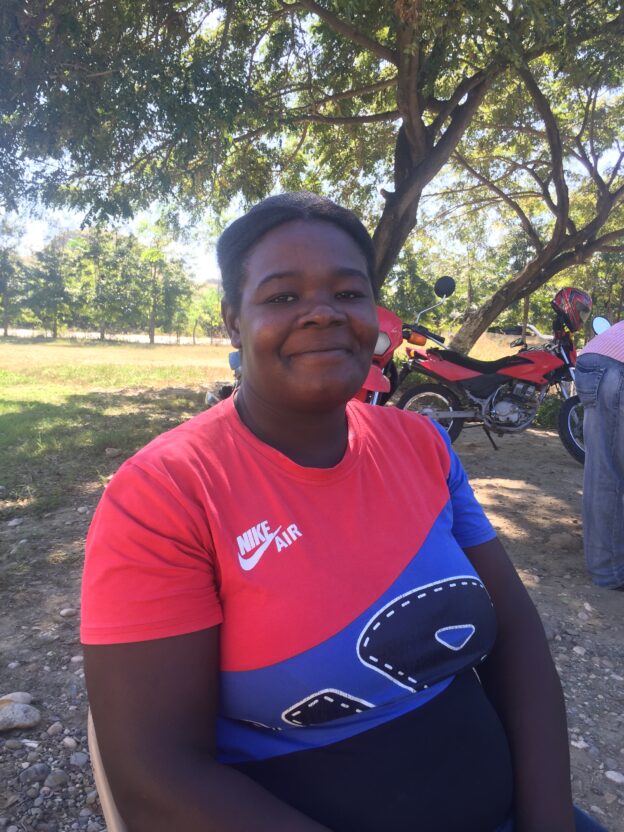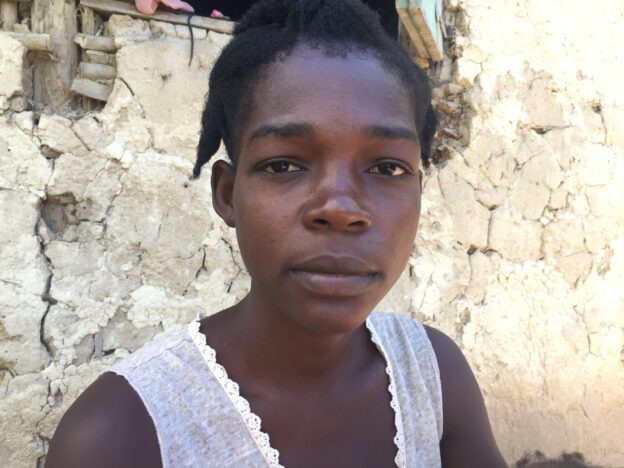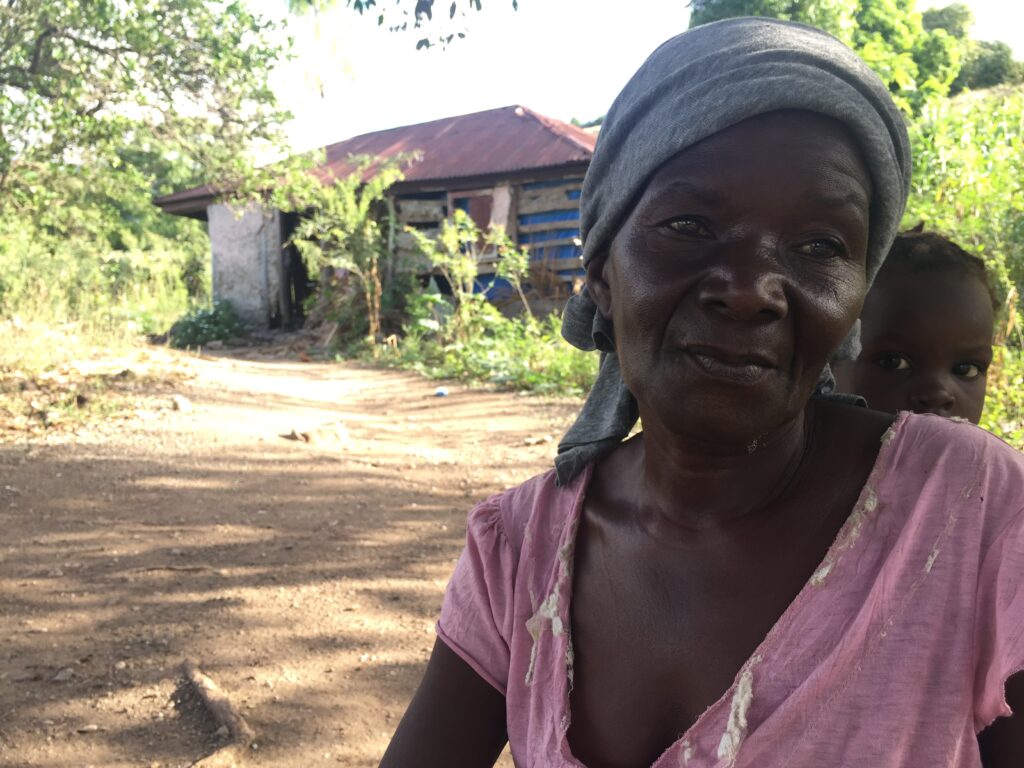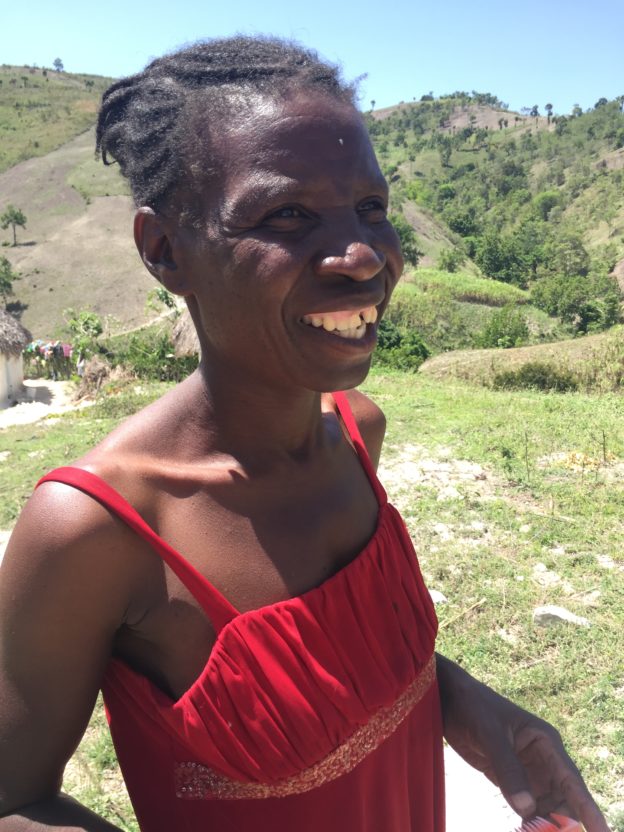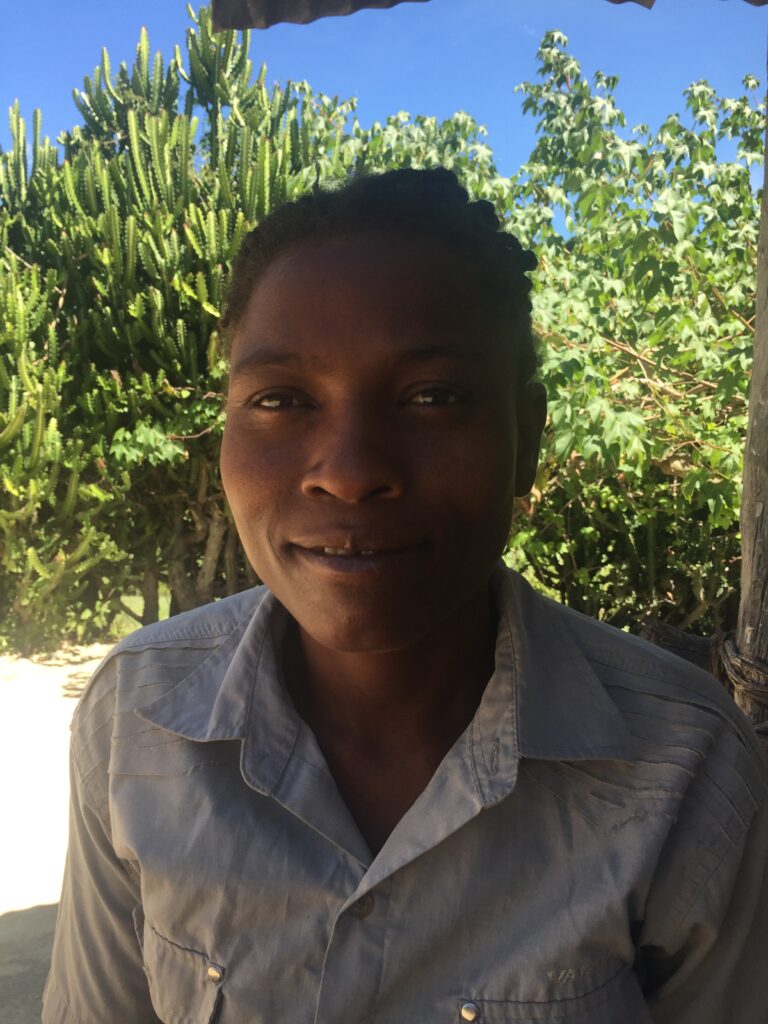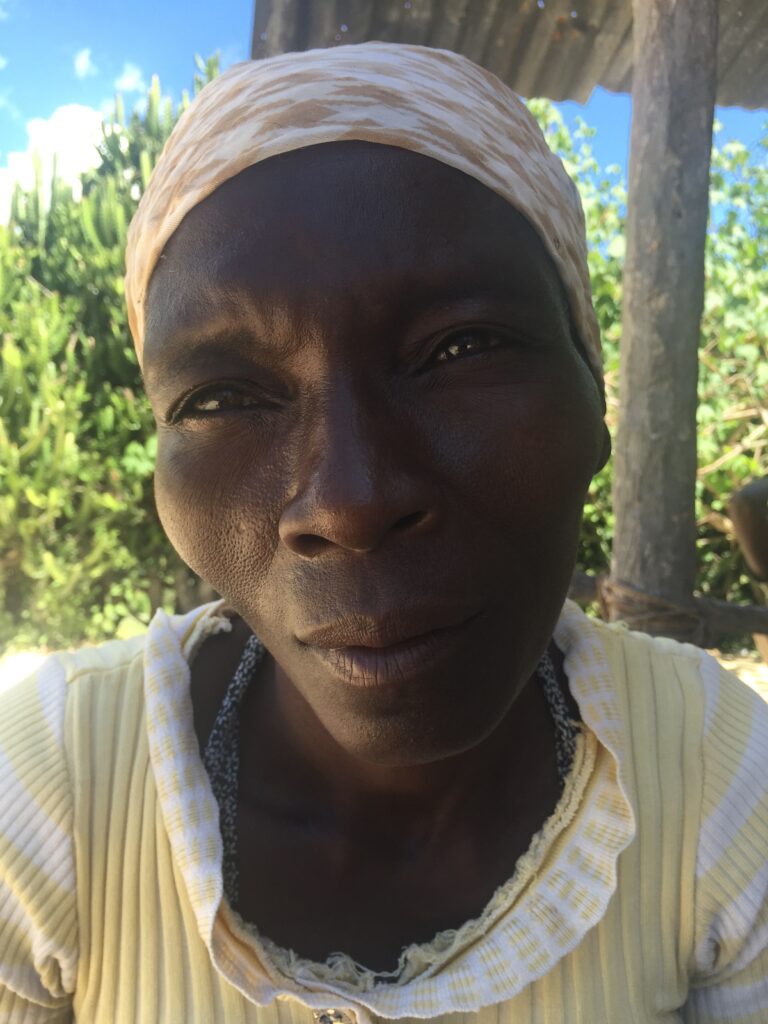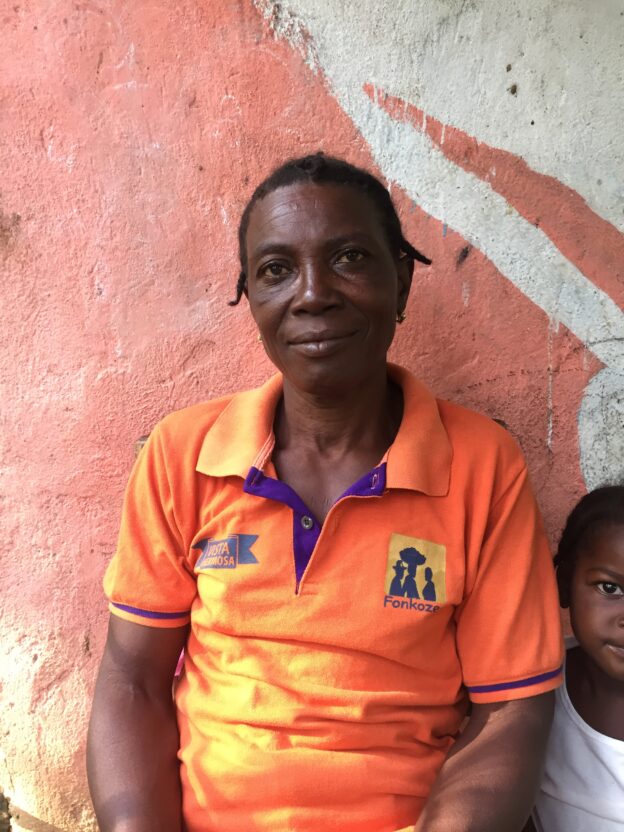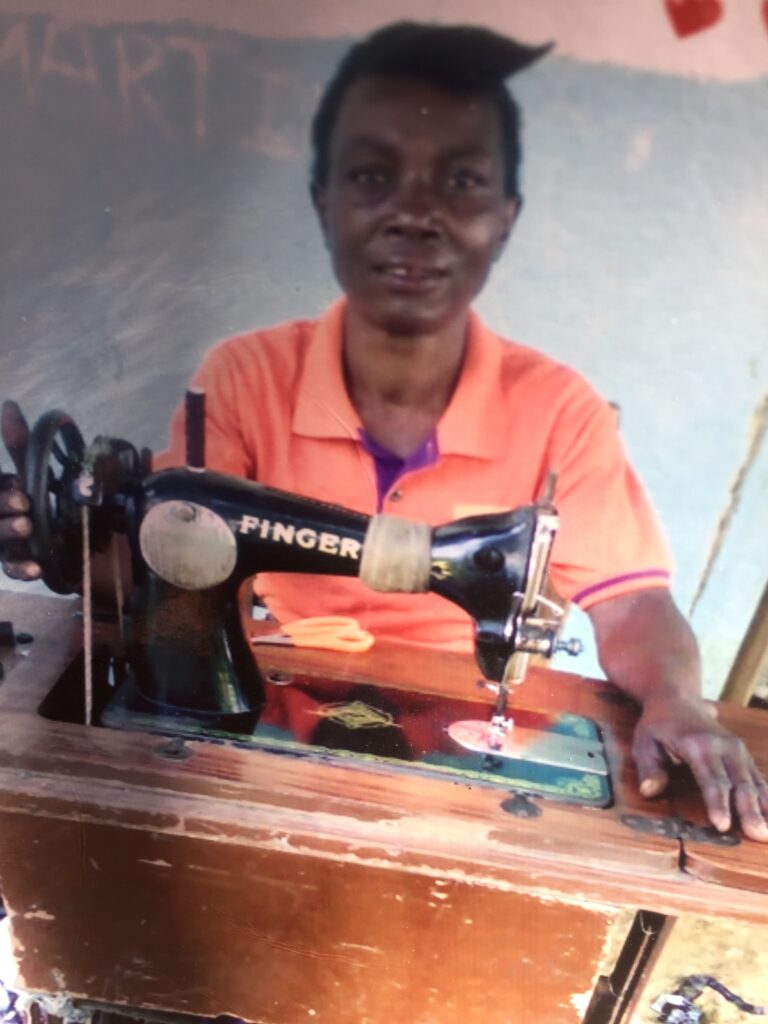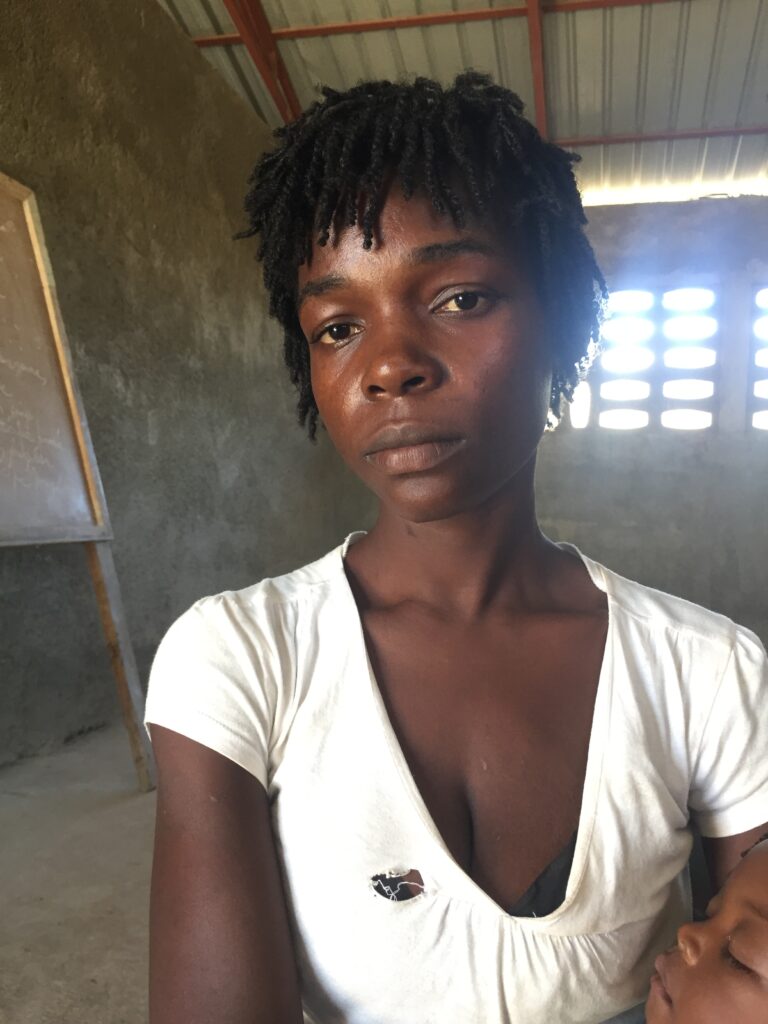
Gauthier Dieudonné, the CLM program’s founding director, likes to say that it takes about three months for CLM families to begin to really trust the CLM team. Early in our engagement with them, we cannot know how much they believe of what we tell them, nor can we know whether they are telling us the truth.
Loralda is a case in point. She has been really struggling since she joined the program. One of her problems involves her housing. She and her partner have been living with their children in a house that doesn’t belong to them. The owner, who doesn’t live in the area anymore, was just letting Loralda use a room. But even before Loralda joined CLM, the homeowner had informed her that she’d have to leave. The house was being sold.
Loralda did what she could. She talked with her extended family, and convinced her aunt and uncle to let her have the use of a small piece of the extended family’s land. It wasn’t much — a rocky, almost-soil-less piece of a slope that no one else seemed to want. But it would be just big enough for her to build her new home on. Digging her latrine is turning out very challenging because the land is so hard. But she and her husband recruited a couple of friends to help them cut a level space, and they found someone willing to give them construction sand. That’s progress. The sand isn’t really close to the new home, though, so she’s still got to figure how she’ll get it delivered. Then she’ll have to organize money to acquire the lumber she’ll need.
Then a distant relative told her that her aunt had no right to put her on the land she’s now on, that she’d have to move somewhere else. Such difficulties are common enough for CLM members. People can be particular about land, even an abandoned plot that no one seemed to be interested in. But Loralda’s problem was harder for her to face because she didn’t mention it to her case manager, Pétion. Fortunately, he heard about the situation from a local committee leader who had been helping him in the area, and he was able to get Loralda’s perspective on it by bringing it up with her. He thinks that he and Loralda will be able to work something out.
She’s also having troubling with her children’s school. Her older brother sent her the 1000 gourds that she needed to send her younger sister, who lives with her, to school, but she also sent her two older children as soon as the schools opened in January, and she hasn’t been able to pay their fees yet. The principal said that, starting Monday, he will no longer accept children from families who haven’t paid. Loralda still doesn’t have that money.
With her still nursing her baby, her husband’s income is the only money they have. And though Loralda says he works hard, she also says that he has trouble finding work to do. Lately, all he’s be able to do is hang around the market, loading produce onto trucks. The change he earns helps them feed themselves and their kids, though they are not yet eating every day, but doesn’t leave much left over to pay other bills. Pétion can talk to the principal. Often they are willing to trust CLM staff to help members manage a payment plan. But Loralda hadn’t told Pétion what she was up against.
And those were not the only problems that she decided against sharing with him. She is very worried about a threat she received from a woman she owes money to. She bought an aluminum wash basin on credit from a merchant for 600 gourds, or about $6.50. She doesn’t have the basin anymore, but she hasn’t been able to pay the bill. The merchant threatened to call her before a judge, which is well within her rights, and Loralda knows that she could be hit with court costs. And the shame of having to appear before a judge.
All this came out at a conversation with Loralda during her first refresher training. She and all the other members of her cohort were together for three days to talk about their experiences in the program so far and to review the lessons they learned at their initial six-day training. When it was clear how upset she was about her situation, we called Pétion over and explained it to him. He took the name of the merchant, along with information about the neighborhood she lives in, and promised to try to see her that day. I asked Loralda why she had never mentioned it to Pétion, and she explained that she was embarrassed. I told her that that is easy to understand but that his only job is to help her in any way she needs him to, but that he can’t help her with a problem he doesn’t know about.
Pétion was, in fact, able to find the merchant. He went by right after the training session ended early in the afternoon. He learned that the debt was an old one, from all the way back in 2017. The woman told him that she had been on her way to see a judge when he showed up. He explained that he was now working with Loralda and that he could guarantee that the debt would be paid, and the merchant agreed to show a little more patience. It was an easy problem to solve, and an easy way to help Loralda see that she can count on Pétion.
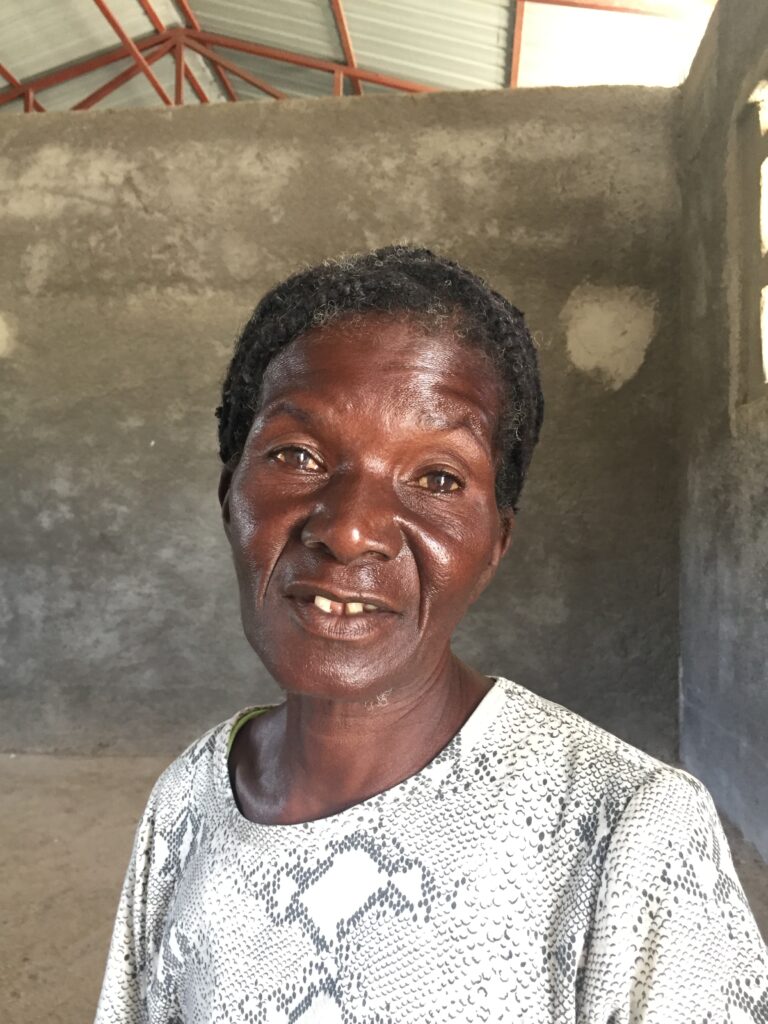
Like Loralda, Meloya too is still struggling after three months in the program. She’s been sick on and off since late November. Only recently has she begun to feel better.
She’s pleased with the initial progress she’s made towards repairing her home. It was badly damaged in the earthquake that struck Gwomòn in October of 2018. She’s been working on the latrine first, and she says that the pit’s been dug and the rocks and sand are ready. “Tout bagay ap prepare.” Everything is in the works.
She had started to develop a very small business when she first entered the program. The gift of a first small sack or water bags, worth less than a dollar, had set her on her way. She had already more than quadrupled her investment. A neighbor saw how hard she was working, and lent her 2,000 gourds to start a larger business, and that’s when disaster struck. She took the money to the market to make her purchase, but after slipping through the crowd, she found that her bag had been slit open and the money was gone. “The only reason I still have 350 gourds is that I left that money at home that day.” The neighbor that lent her the money was shocked by the loss, but is also understanding. Meloya will have to repay the money, but the woman isn’t pressing her too hard just yet.
The loss shocked Meloya, too. She considered going back to begging, which is the way got by for the years between when her own children died and she returned to her husband to take care of the ones he had with his late second wife. When you beg, she explains, “People either give you money or they don’t, but you have nothing to lose.”
But she’d rather try business again. She wants to sell peanuts. She would buy them in the shell. She’d then sell them shelled. She thinks she could turn a profit with 2000 – 2500. She just needs to figure out, with Pétion, where she should take the money. She has more than that in savings already, so she could start as soon as she thinks she’s ready. For now, however, she’d rather focus on the work repairing her home.
